October 8, 2010
by Sarah Newman
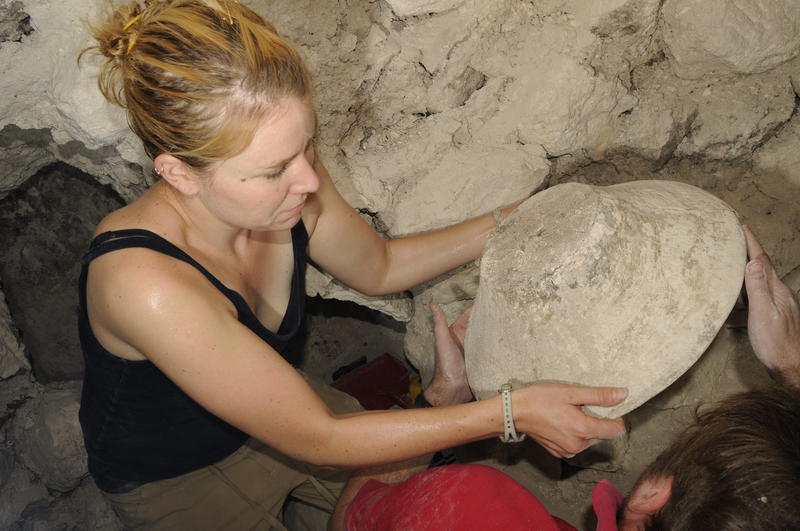
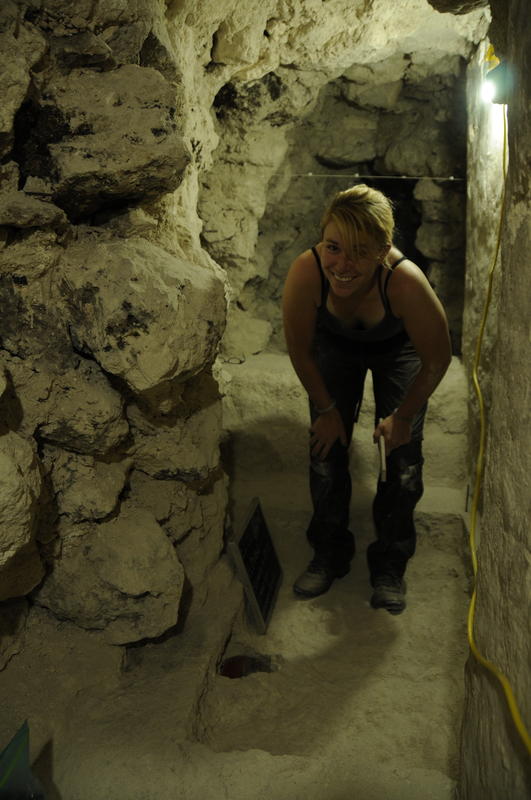
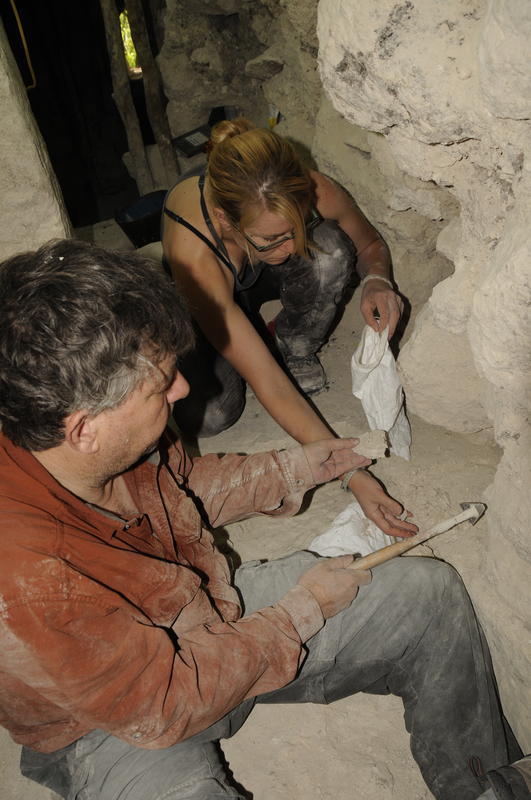
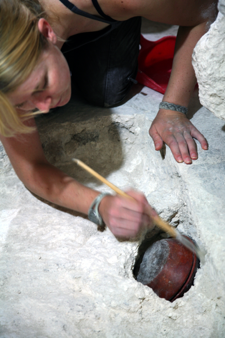
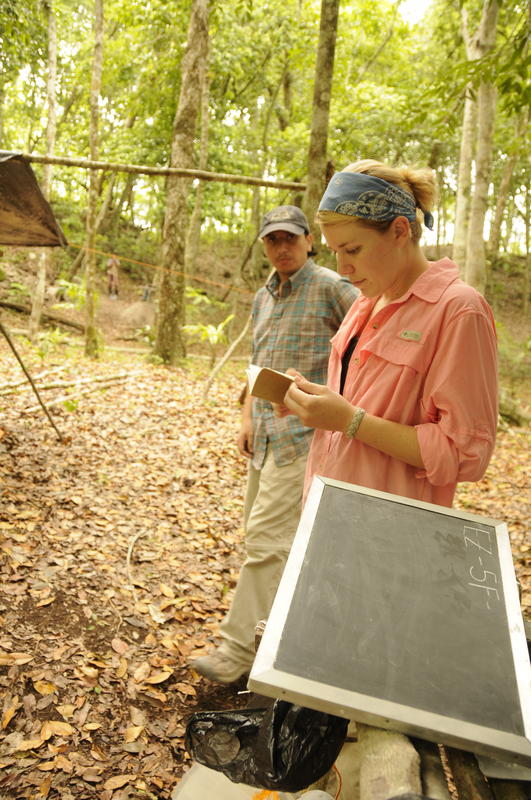
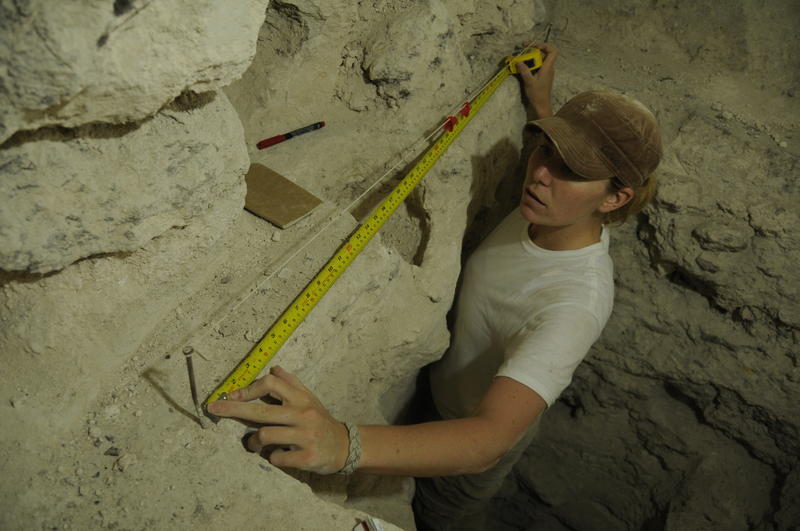
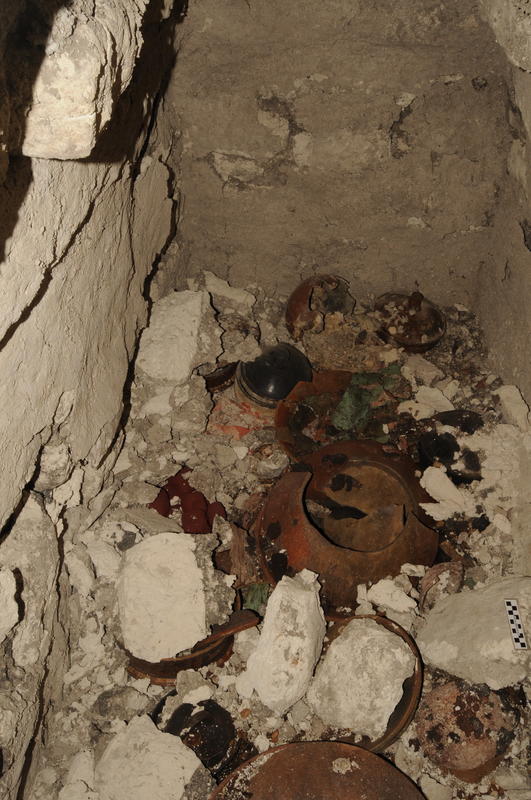
As a member of the Proyecto Arqueológico El Zotz during the 2010 fieldwork season, I worked alongside the project’s Guatemalan Co-Director, Lic. Edwin Román, in excavations at a civic-ceremonial group known as El Diablo. The El Diablo satellite group is located directly to the west of the principal ruins of the site of El Zotz itself, in the Petén region of Guatemala. These investigations increased data retrieved during previous field seasons seeking to explain the abrupt abandonment of El Diablo during the Early Classic period (A.D. 250-600) and culminated in the serendipitous discovery of a royal tomb located within the group’s largest structure, the pyramid known as F8-1. This tomb contains some of the best examples of Early Classic ceramic vessels found in the Maya Lowlands and a variety of organic materials rarely encountered in Maya archaeology.
The discovery of the tomb can be regarded as something of a miracle, in light of the abundance of illegal looting activities that have taken place at the site of El Zotz since the 1960s. Dr. Stephen Houston, Lic. Edwin Román, Dr. Thomas Garrison, and I excavated the tomb, with the support of archaeological conservator Catherine Magee. The rich contents of the tomb, including thirty-eight ceramic vessels with various shapes, designs, and surface finishes, ten large jade objects, over one hundred marine shells, and rare examples of wood, stucco, and textiles, represent keys to understanding the Maya of the Early Classic period, particularly in relation to funeral rites and economic foundations of power among the ancient Maya.
Following the project’s six-week field season, the materials recovered from the excavation of the royal tomb were transported to the project’s laboratory located in Antigua, Guatemala. At the Antigua lab, I spent the remaining six weeks of my research in Guatemala cleaning, cataloguing, and documenting the tomb’s various artifacts, with a special focus on the ceramic vessels recovered. The priority during this stage of research lay in the documentation of these materials (measurements, notes, drawings, and photographs), which will allow for greater analysis and contextualization of these finds during continued research back in the United States.
This research, generously funded in part by the Waldbaum Scholarship, will not only form the backbone of my Master’s Thesis at Brown University, but provides an exciting opportunity for other researchers in the Maya area as well. The collection discovered, documented, and described through this research represents some of the rarest and finest examples of ceramic technology, iconographic style, and contextualized uses of vessels during the Early Classic period – a sample of immeasurable value both comparatively and in its own right.